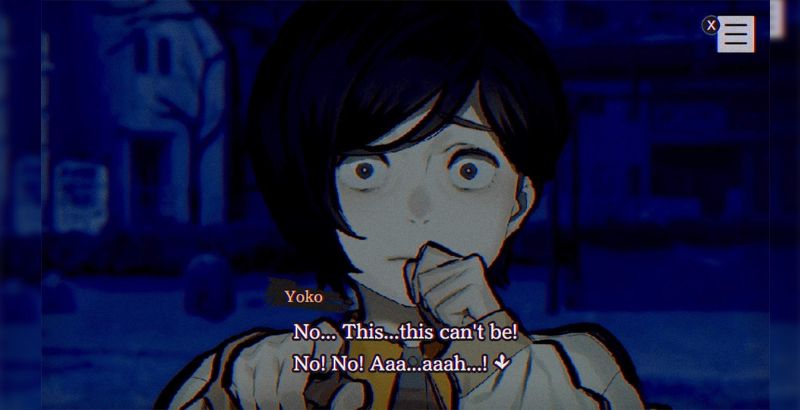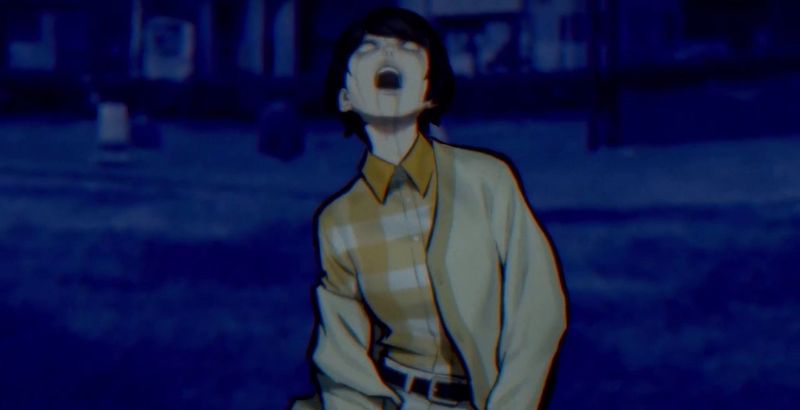Japanese horror is essential watching for any horror fan, and now, PARANORMASIGHT: The Seven Mysteries of Honjo is a must-play too. Published and developed by Square Enix, PARANORMASIGHT is a paranormal mystery adventure RPG done in a 2D visual novel style. With gorgeous art and fantastic use of jump scares, this is a game that hits nearly all my favorite things about the macabre and folklore in one go.
Set in the late 20th Century in the Sumida Ward of Tokyo, Japan (known as Honjo in the Edo period), PARANORMASIGHT: The Seven Mysteries of Honjo takes players through a number of supernatural myths, real-world urban legends tied to the area known as the “Seven Mysteries of Honjo.” Opening with the player as Shogo Okiie, you are an ordinary office worker who goes to Kinshibori Park in the dead of night to help his friend Yoko Fukunaga investigate one of these local ghost stories. Yoko can see things others can not and opens your world to the “Seven Mysteries of Honjo” as she helps fill in the gaps of your missing memories. Meanwhile, other residents of Sumida are conducting investigations into the local legends. We get a pair of detectives investigating a series of strange deaths, a high school girl looking for the truth behind a classmate’s suicide, and a grieving mother investigating her son’s passing, and more. Here, you follow the cursed seven as they embark on a supernatural ordeal over a three-day period to realize their desperate hopes and dreams and maybe have an existential crisis along the way or two.
The character designs and the way you interact with the world through them are truly fantastic no matter how difficult their stories may be. Each character doesn’t just offer a new tale but a new way to connect to the game too. The variance of character works with the diversity of the stories told. While some are pure horror, others are tales of the fantastic, but all of them force you to think beyond your expectations.

Building up the player through tension-filled folkloric storytelling and clever use of visual design to immerse the player in the game and the stories they explore is a balance that makes PARANORMASIGHT: The Seven Mysteries of Honjo shine darkly. This is due in large part to the use of a 360-degree panoramic view of Sumida that allows the player to see the city as if they were really turning and looking around the location. While this 360-view was marketed for its accuracy thanks to Square Enix working with the Sumida City Tourism Division, the beauty and sinisterly looming city does more than add authenticity. It creates atmosphere and ambiance in such a way that the dread builds and cascades. Proving that setting is just as important as anything that’s going bump just out of sight.
On that point, the stories told in PARANORMASIGHT, “The Seven Mysteries of Honjo,” are real urban legends taken from Sumida, and boy do they hit. Pulling the player back into the Edo period when the area was called Honjo, the player explores the different urban legends that sprung up in the area, tracing a city’s folkloric history in the process. The stories in question are The Beckoning Light, The Everburning Lantern, The Whispering Canal, The One-Sided Reed, The Haunting Clappers, The Fool’s Procession, and The Foot-Washing Mansion. But don’t worry if you think seven sounds too short because there are definitely more than seven mysteries to explore and be haunted by.
Each and every one of the stories put the player in the middle of a mystery through different characters as they come to life. And while I loved each of them, the very first one you encounter is my favorite. Called The Whispering Canal, the legend hit me a bit more than the rest, thanks to growing up with tales of La Llorona. I mean, fishermen being dragged away into a canal ever to return after hearing a voice? Yup, it taps into a particular kind of nightmare fuel.
With an easy and creepy entry into the game, PARANORMASIGHT: The Seven Mysteries of Honjo eases the audience in and builds with each subsequent story. The easiest way to explain why PARANORMASIGHT: The Seven Mysteries of Honjo appeals to me is that it reminds me so thoroughly of the work of Junji Ito. The brevity of the tails and the ominous nature of each one delivers a tough punch, especially when you’re playing in a dark room. Simple and effective, each of the tales lands and ultimately connects to something greater: the Rite of Resurrection.

The Rite of Resurrection is the core of the game. A mysterious ritual that, if performed successfully, can bring someone you love back from the dead. This plays into the question that game’s theme revolves around: What would you do to bring someone back from the dead? PARANORMASIGHT: The Seven Mysteries of Honjo asks the player this constantly, and as the stories begin to show the increasing consequences of making that choice. While there is some repetition and a lack of instruction as you progress through each chapter, there are some weird pacing choices as the overall narrative moves you towards understanding The Rites of Resurrection. But nothing in those very small hiccups are immersion-shattering choices. Even the Storyteller, in all of his creepy glory, doesn’t distract you when he interjects into the game.
Playing this game, having lost so many family members in the past couple of years, was interesting. It pushes the player to engage with death in an abstract way through urban legends but checking in on where you stand in regard to The Rite of Resurrection forces you to look at the consequences and see if any of it is worth it. While the Rite of Resurrection is said way too many times to count and can get a little too repetitive in terms of the game’s narrative, the way you interact with it as a player doesn’t get stale.
While the game does test the player and their ability to remember events and connections, for those who have a hard time remembering small details, the File system allows you to access the information you have unlocked by investigating things or talking to other characters. Additionally, the conversations you have been logged in the same menu before you select to read files or persons of interest. You can see the dialogue, what you recalled, and when you recalled, which allows for some double-backing. Being able to reread conversations you’ve just had is perfect when you play with auto-read (which I highly recommend) and get distracted or just need a refresher. This eases the gameplay significantly and doesn’t break immersion either.
Sumida and its urban legends come to life in PARANORMASIGHT: The Seven Mysteries of Honjo in a way I didn’t expect from a 2D visual novel. I expected something artistic, yes, but I got something that engaged me, sent a shiver down my spine, and that I ultimately couldn’t put down. Filled with cornerstone archetypes of Japanese horror, this is a must for horror lovers.
PARANORMASIGHT: The Seven Mysteries of Honjo is available now on Nintendo Switch and PC.
PARANORMASIGHT: The Seven Mysteries of Honjo
-
Rating - 8.5/108.5/10
TL;DR
Sumida and its urban legends come to life in PARANORMASIGHT in a way I didn’t expect from a 2D visual novel. I expected something artistic, yes, but I got something that engaged me, sent a shiver down my spine, and that I ultimately couldn’t put down.







